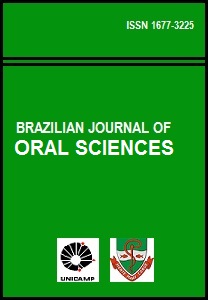Abstract
Aims: Among the oral infections, candidosis may be considered the most frequent, and C. albicans the most prevalent species. Meanwhile, the non-albicans species may also be related to other infections processes and be able to affect the oral cavity, including periodontal disease. In this sense, understanding the relationship between Candida spp. and host, it is necessary and justified the search of mechanisms modulators of infections and treatments against diseases associated with these yeasts. Methods: Nineteen patients with periodontal disease were involved in this study. The aim was evaluate the susceptibility to azoles antifungals fluconozole, itraconazole, ketoconazole and the polienic anfotericin B against Candida spp isolated from three different sites of the oral cavity from these patients (periodontal disease, being periodontal pocket, oral mucosa and ridge gingival), by the minimum inhibitory concentration method – MIC. Results: Among the samples of C. albicans, 88% showed susceptibility depending on the concentration (SCD) and 3.6 % were resistant to at least one antifungal azole studied. Among the others species, 57% presented SDC and 42.8% showed resistance to at least one of the antifungal azole tested. Regarding to Anfotericin B, 90% of the C. albicans isolates and 3% of the nonalbicans showed resistance. There was no occurrence of resistance to the fluconazole and only 3.6% of C. albicans and 40% of the non-albicans were SDC to this antifungal. Conclusions: Patients with periondontal disease showed relevant levels of colonization by Candida spp, mainly at the oral mucosa and periodontal pocket showing important occurrence of SDC and resistance to the antifungals drugs tested.The Brazilian Journal of Oral Sciences uses the Creative Commons license (CC), thus preserving the integrity of the articles in an open access environment.
Downloads
Download data is not yet available.

